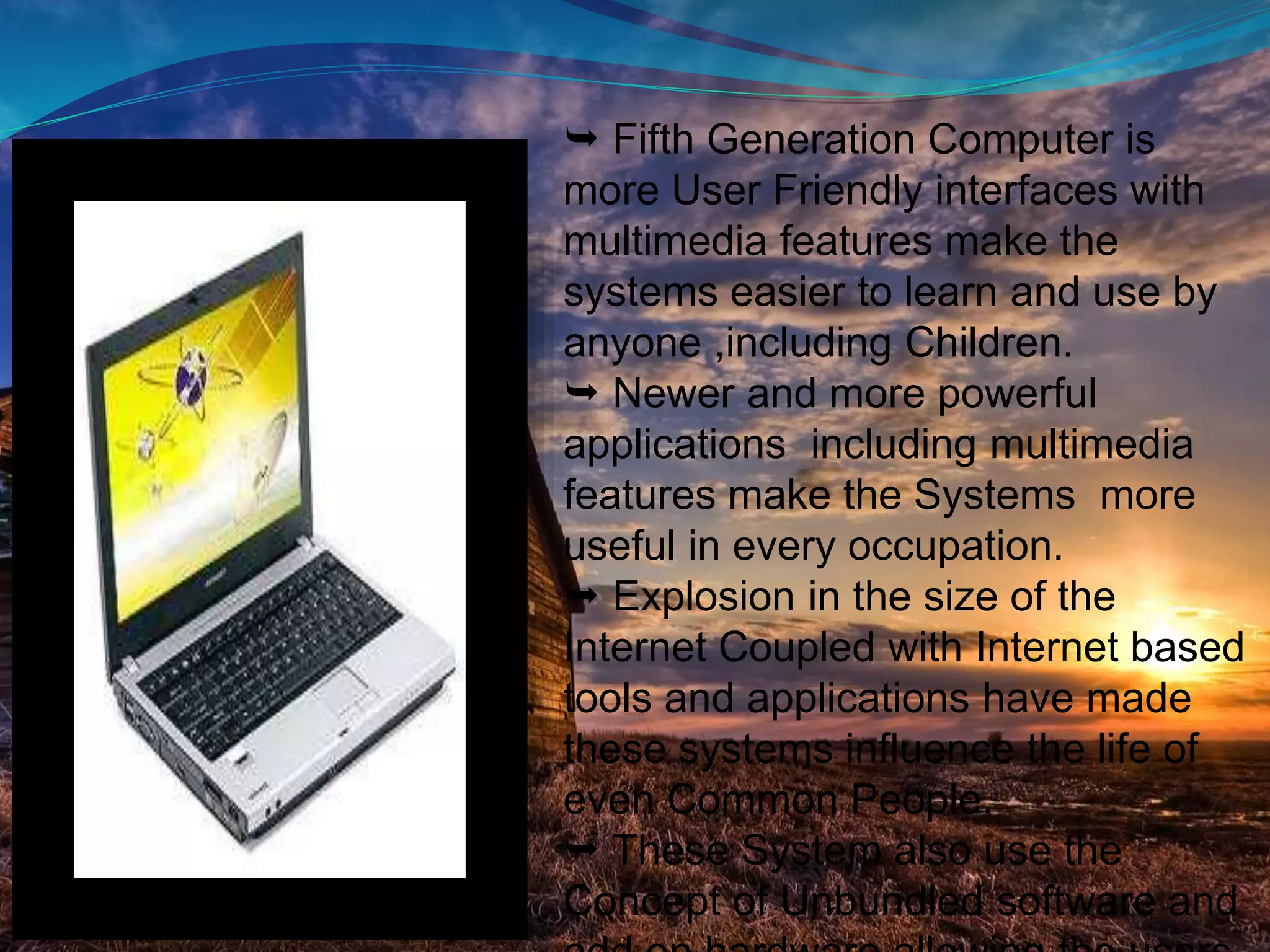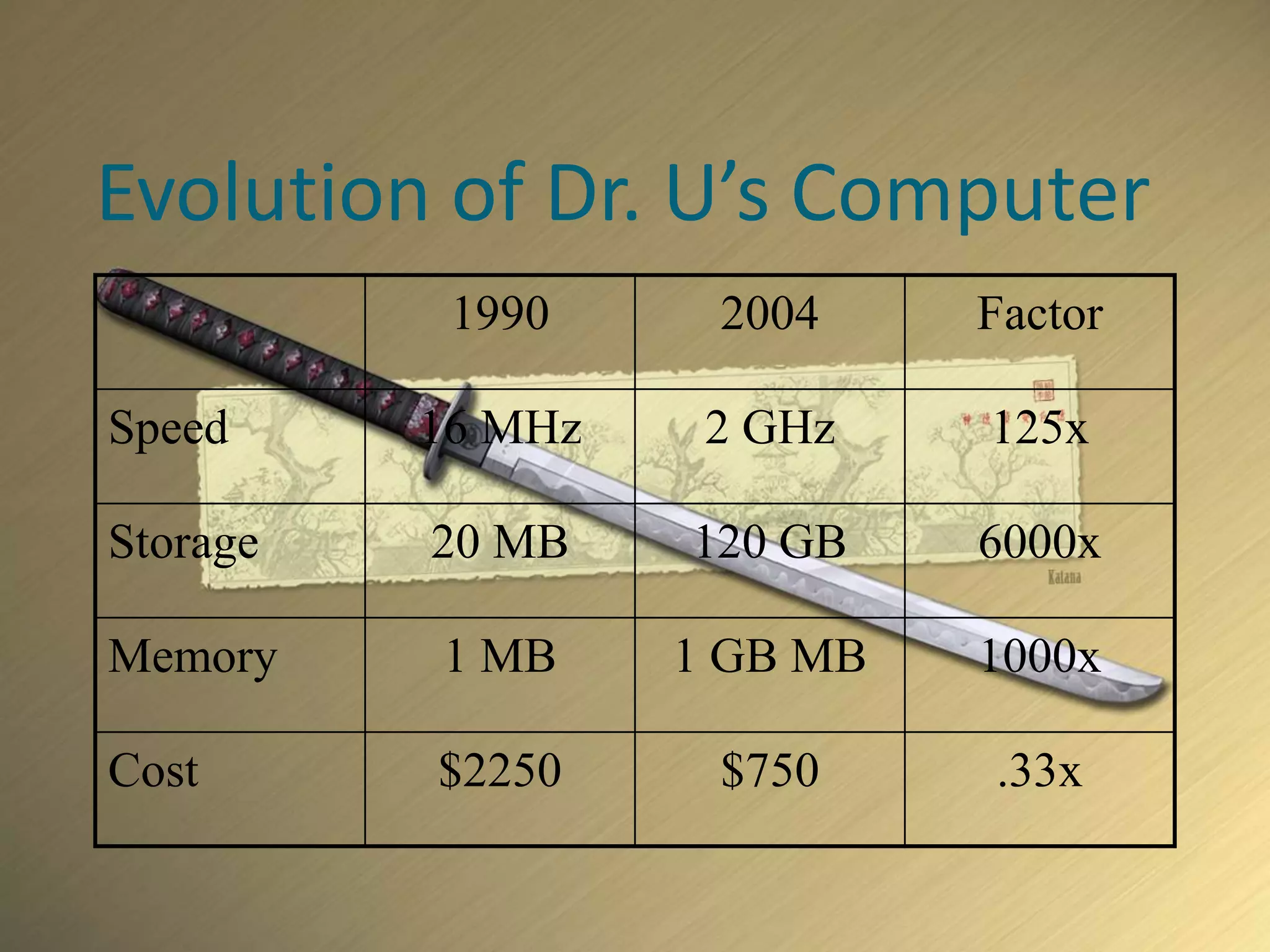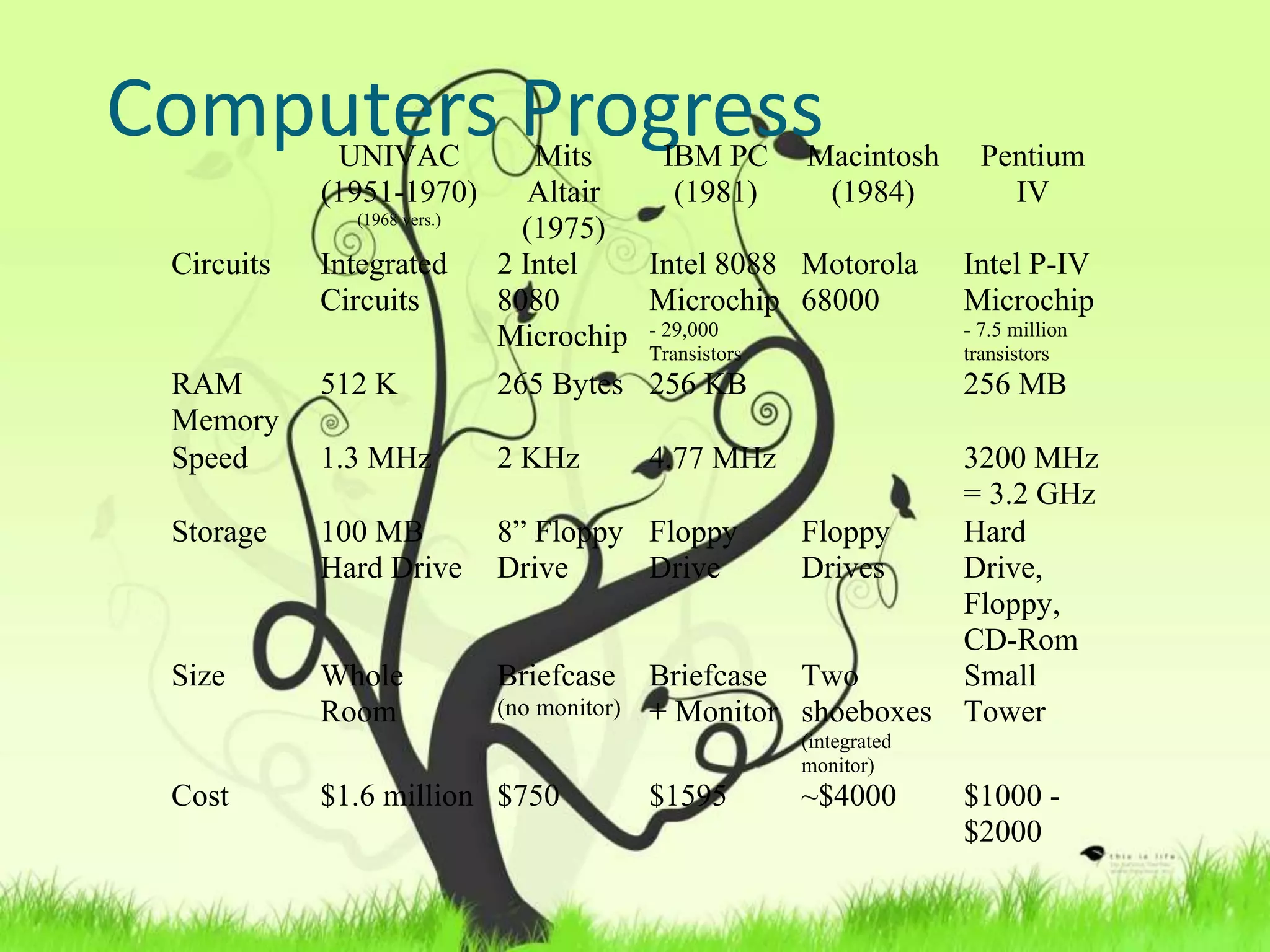This document discusses the five generations of computer development from 1943 to the present based on the technologies used. The first generation used vacuum tubes and were large, power-intensive machines for specialized use. The second generation introduced transistors, making computers smaller and more reliable. The third generation used integrated circuits which improved processing speed and memory capacity. The fourth generation began the era of microcomputers and personal computers. The fifth generation incorporated concepts like artificial intelligence, distributed processing, and portable PCs. Each generation saw improvements in performance, cost, size and capabilities.
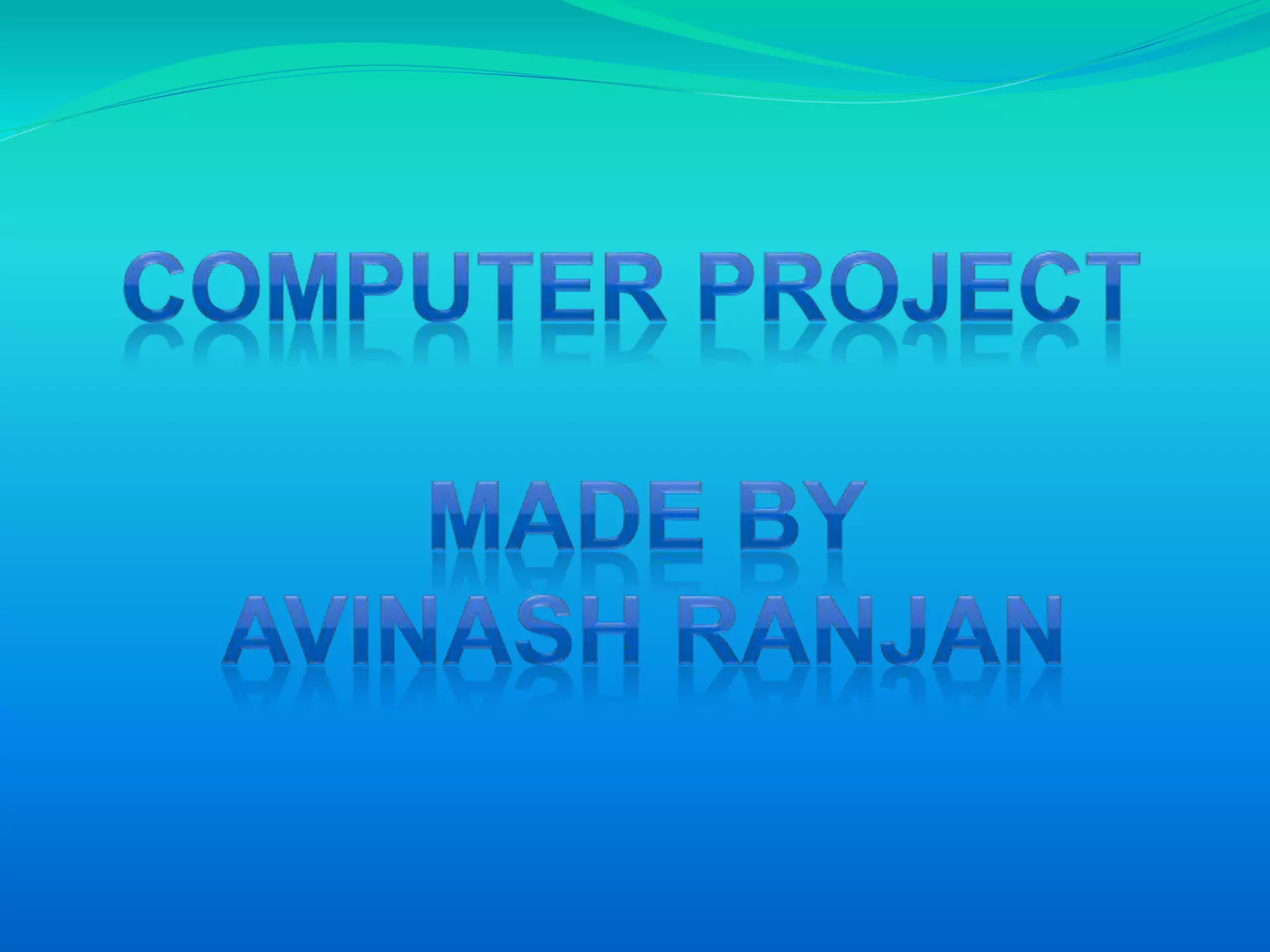
![Generation of Computer
Computer develops after the first
electronic Computer ENIAC- [
Electronic Numerical Interigrater and
Calculator ] are classified into five
generation is baised on the Technology
used in architectural development of
computers. It also includes
Computational Technic. Input and
output devices and programming
languages used.](https://image.slidesharecdn.com/computergenrerations-150221073331-conversion-gate01/75/Presentation-On-Generations-Of-Computer-2-2048.jpg)

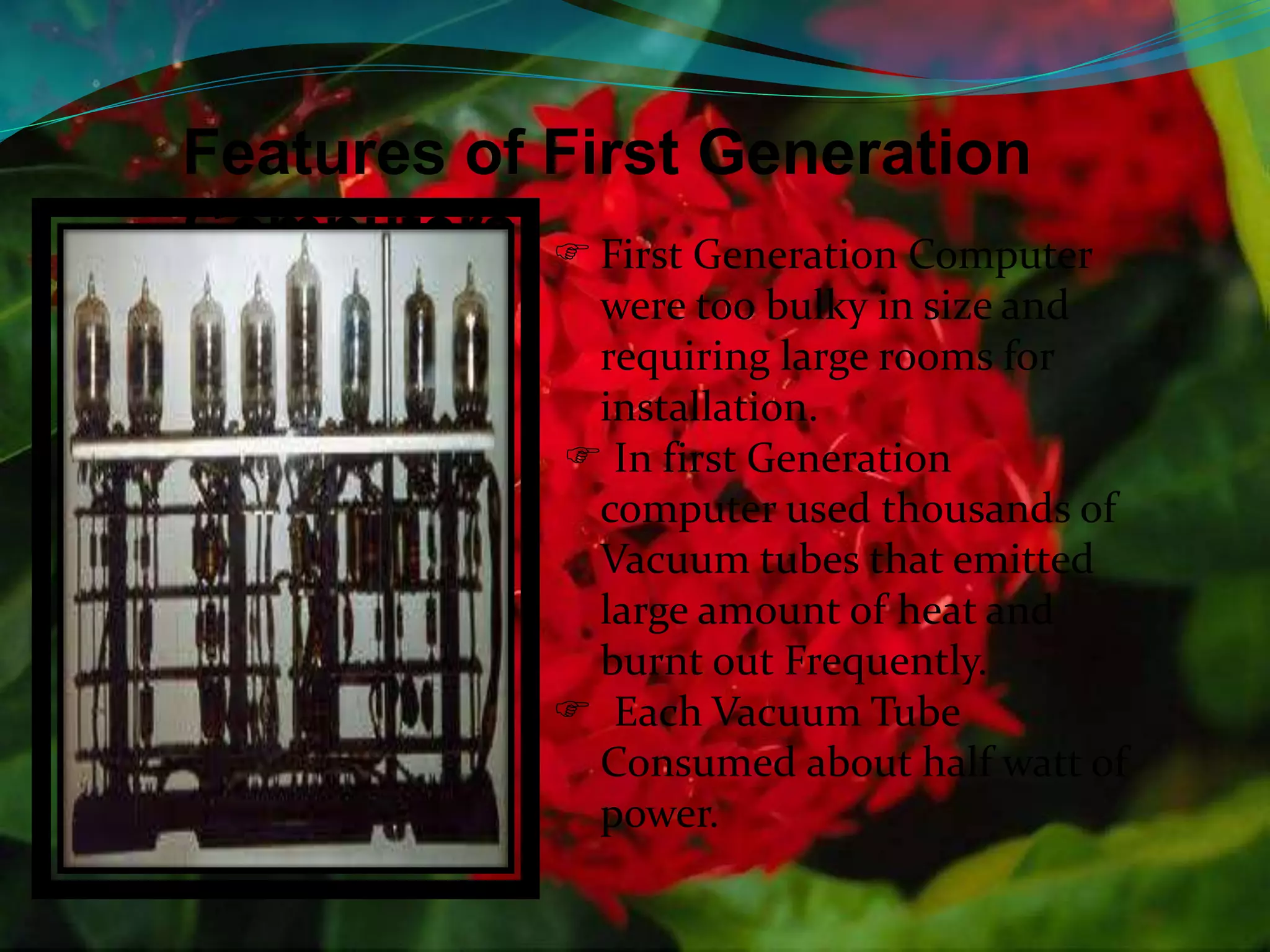
![1956 IBM 350 RAMAC
Second generation [1959-64]
Used transistors,
developed by Bell Labs.
Up to 32K of memory.
Programming in
computer languages,
such as FORTRAN and
COBOL.](https://image.slidesharecdn.com/computergenrerations-150221073331-conversion-gate01/75/Presentation-On-Generations-Of-Computer-5-2048.jpg)


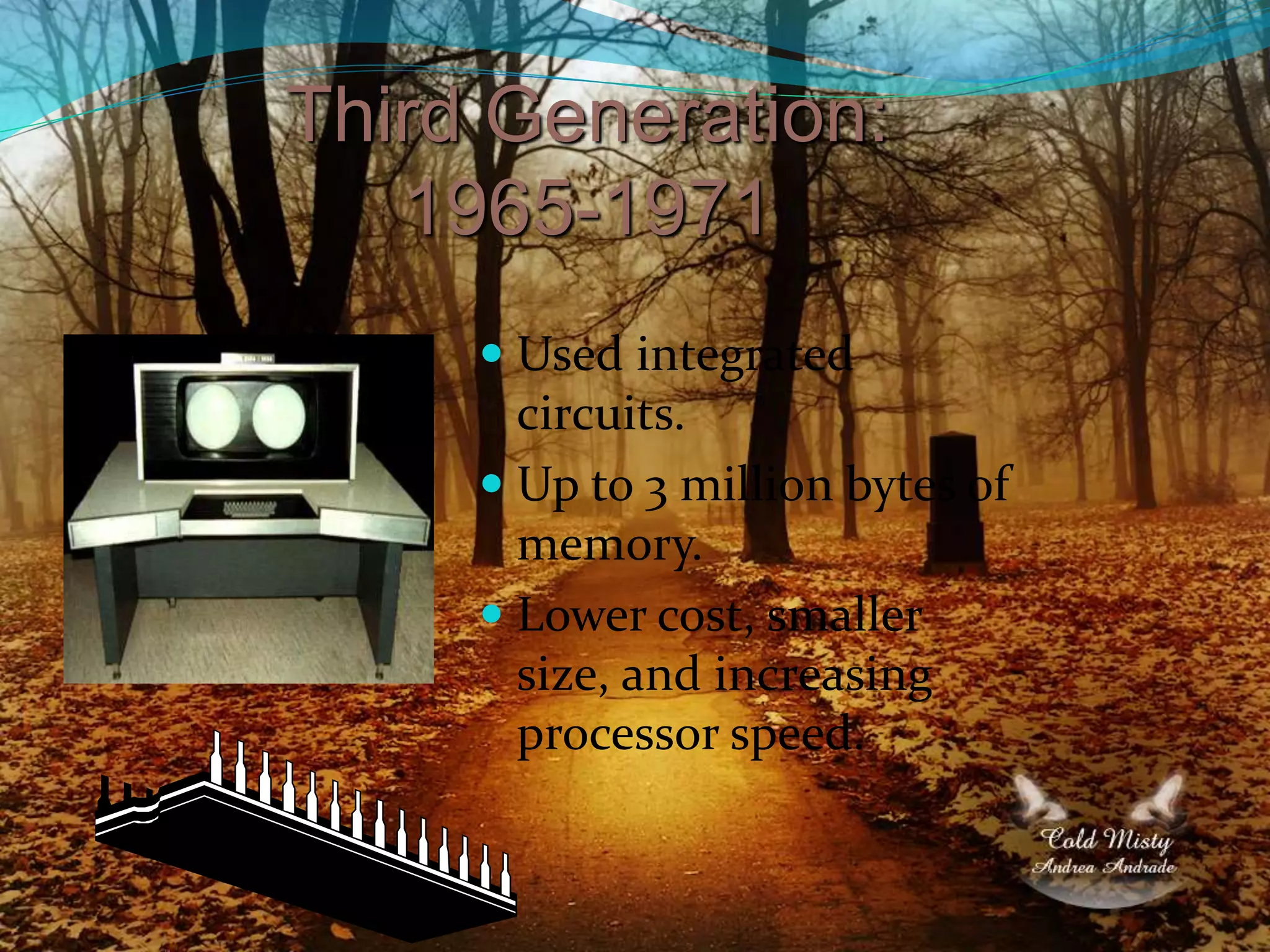
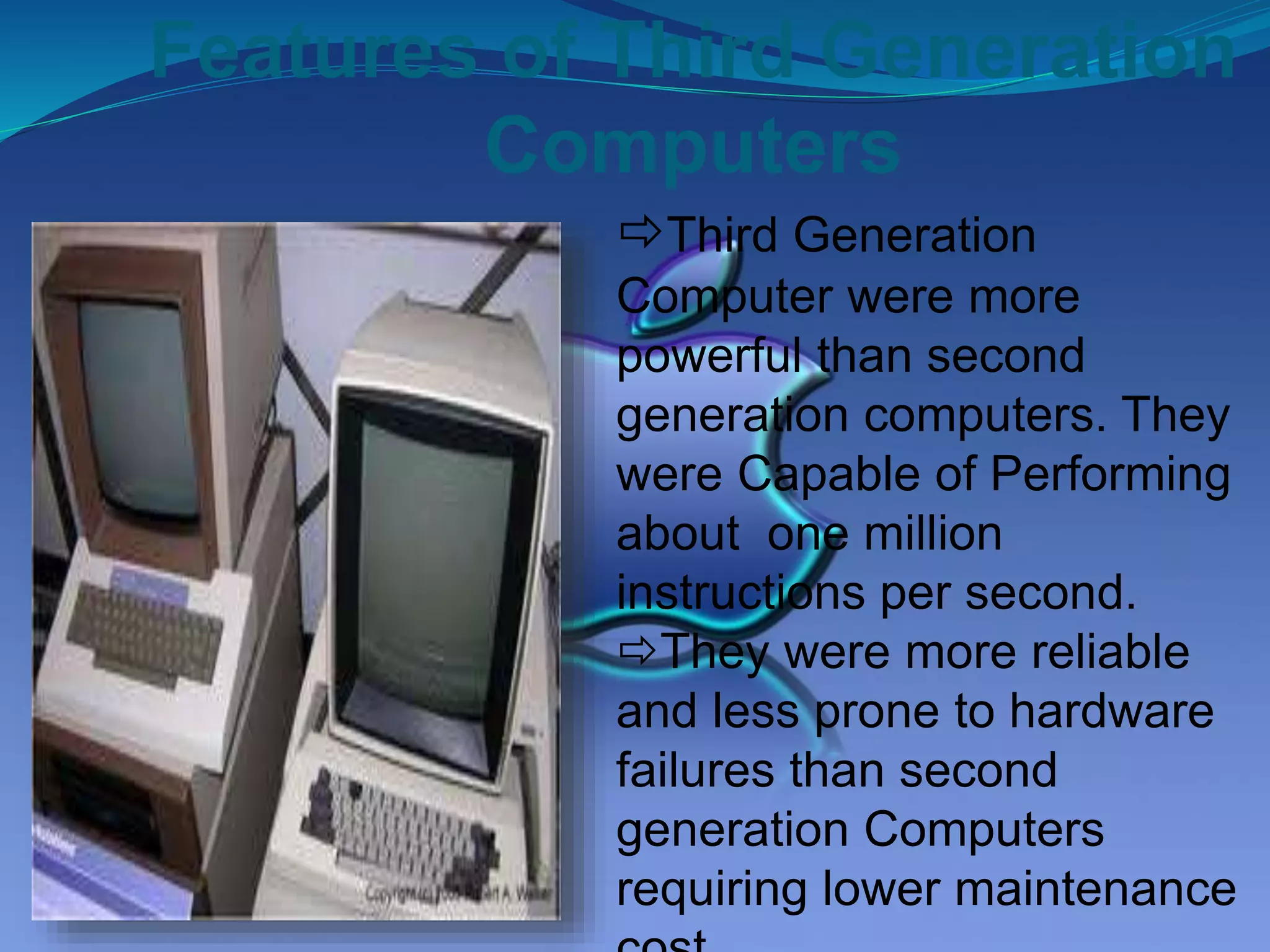
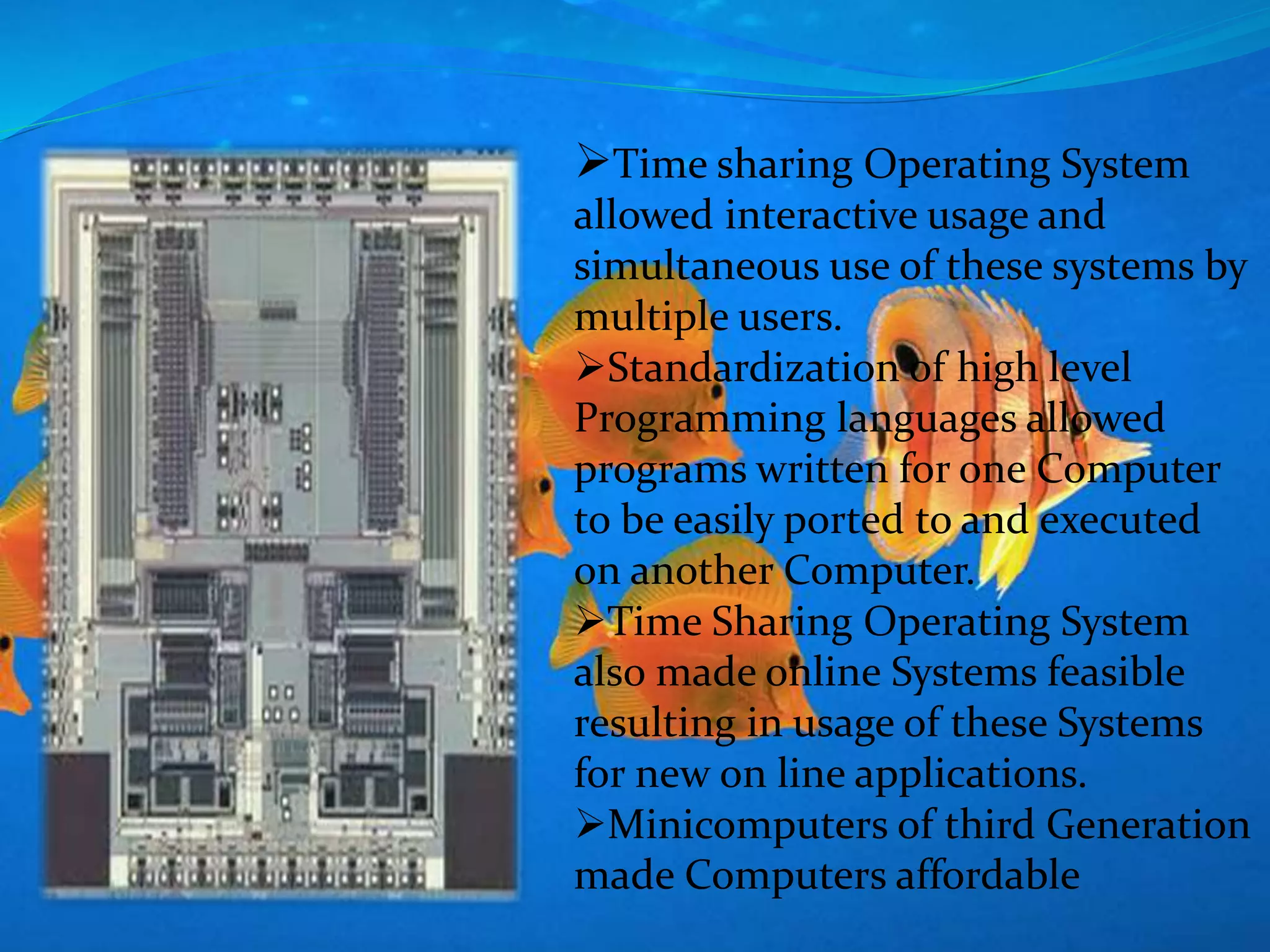
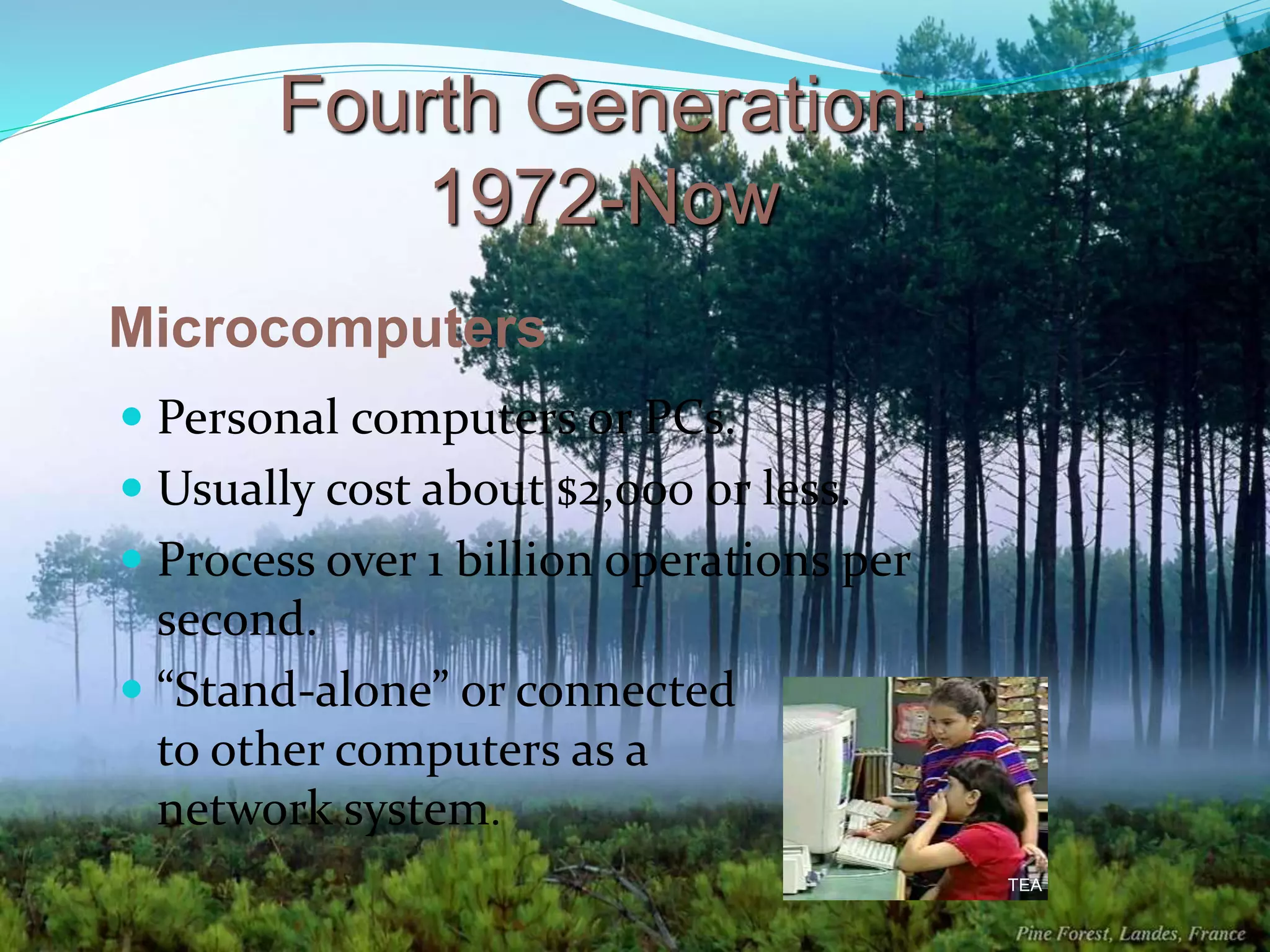
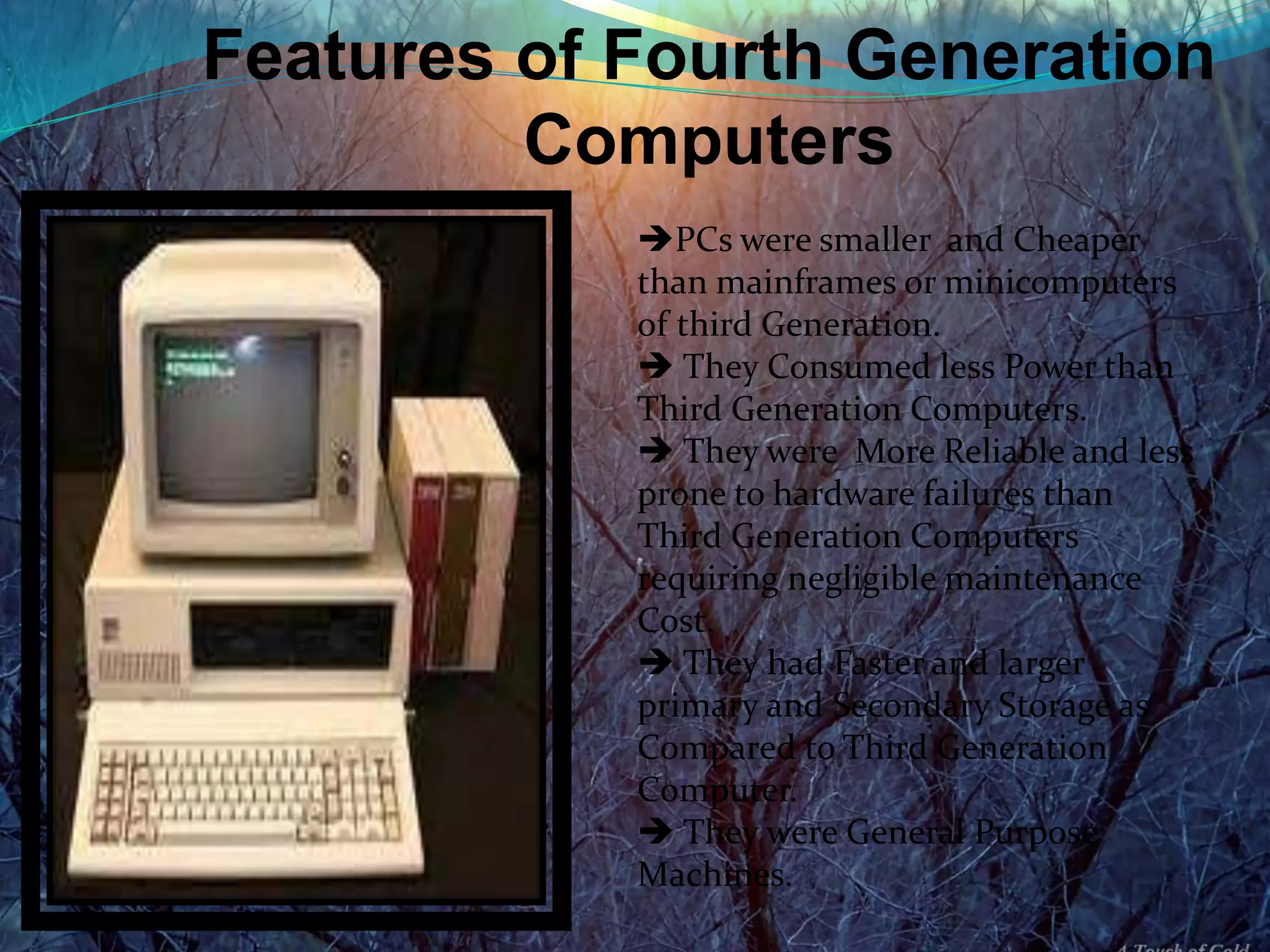
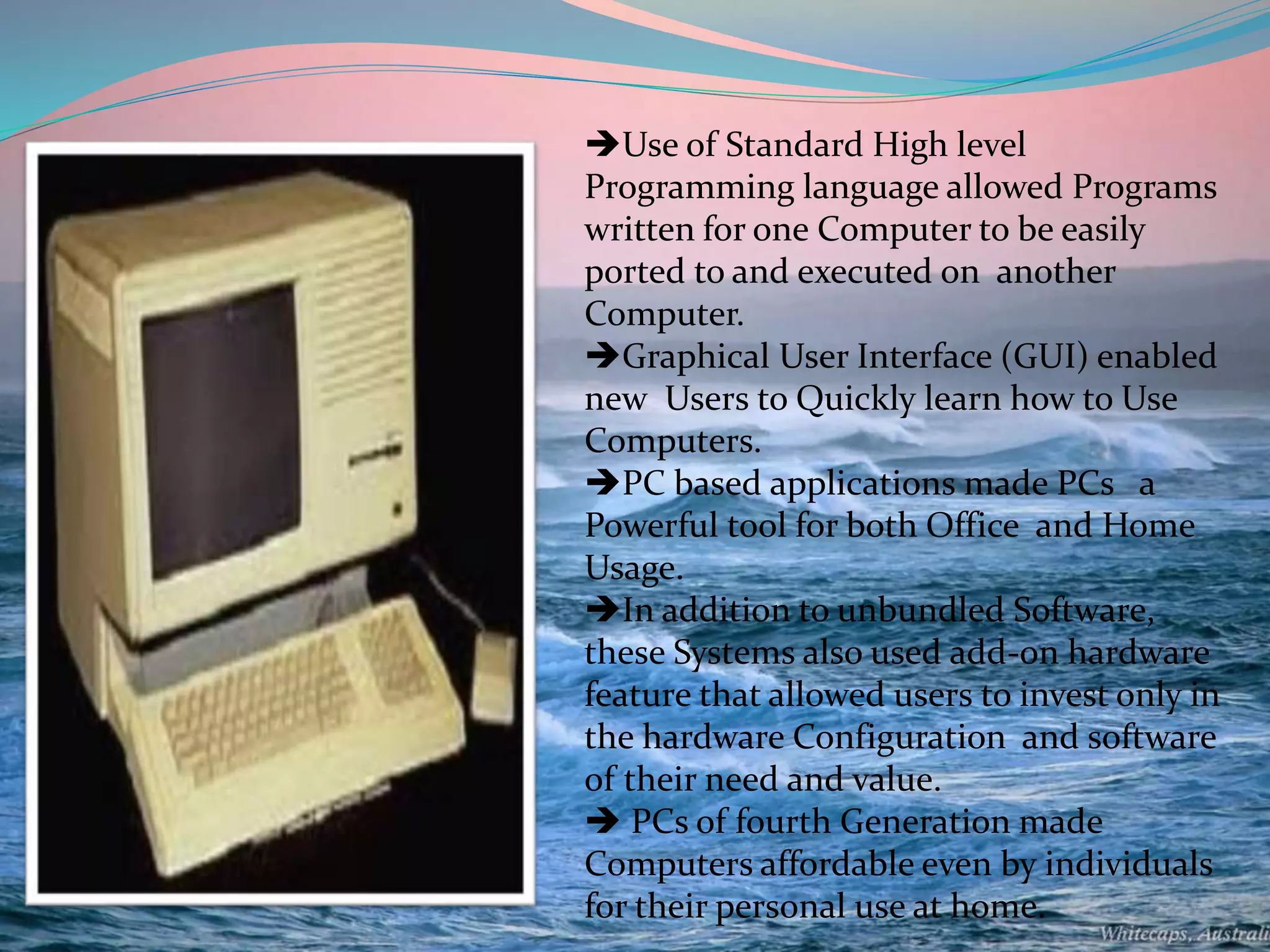
![Fifth Generation [1990 to Present]
The Development of Super
Computers was the key
motivation of 5th Generation
Computer. Super Computer
were develop with ULSI(Ultra
Large Scale Integration). These
are Knowledge Processing
System. Concept Like Artificial
Intelligence and Distributed
Processing were incorporated
.fifth Generation Desktop PCs
and Workstations are several](https://image.slidesharecdn.com/computergenrerations-150221073331-conversion-gate01/75/Presentation-On-Generations-Of-Computer-14-2048.jpg)

